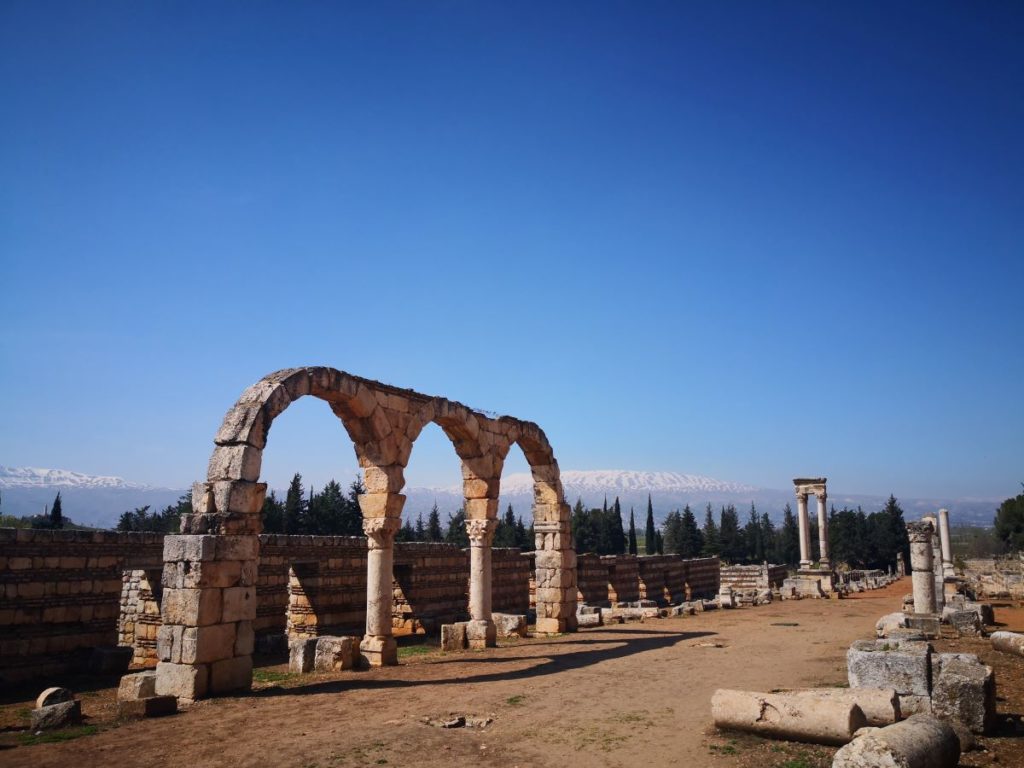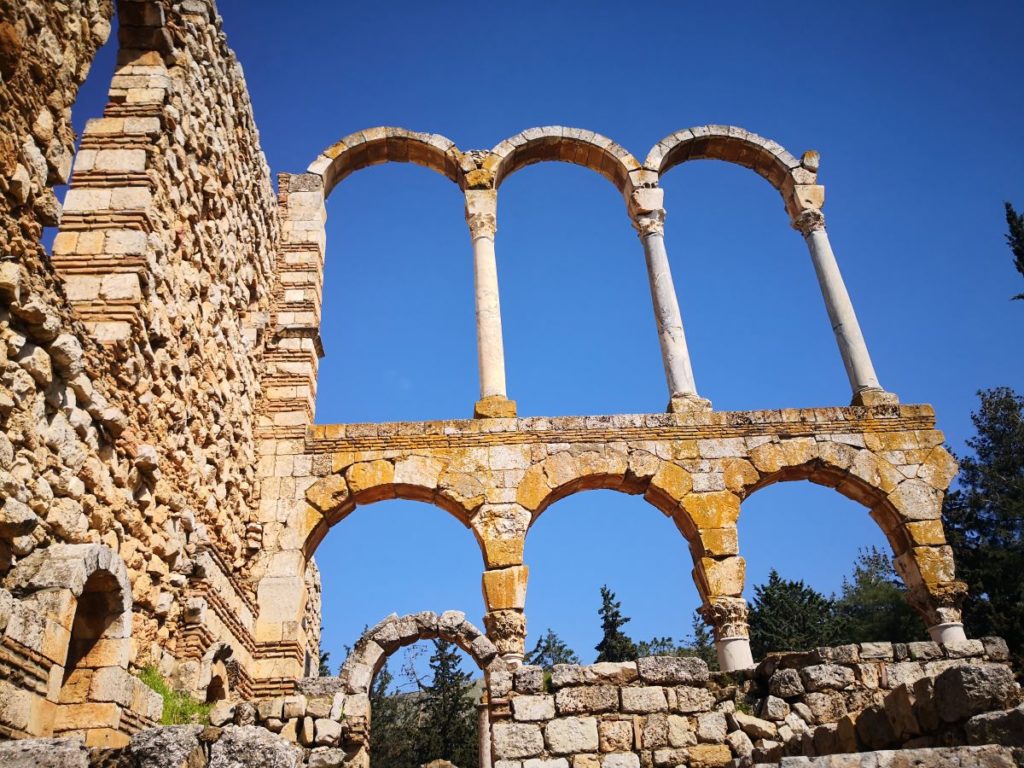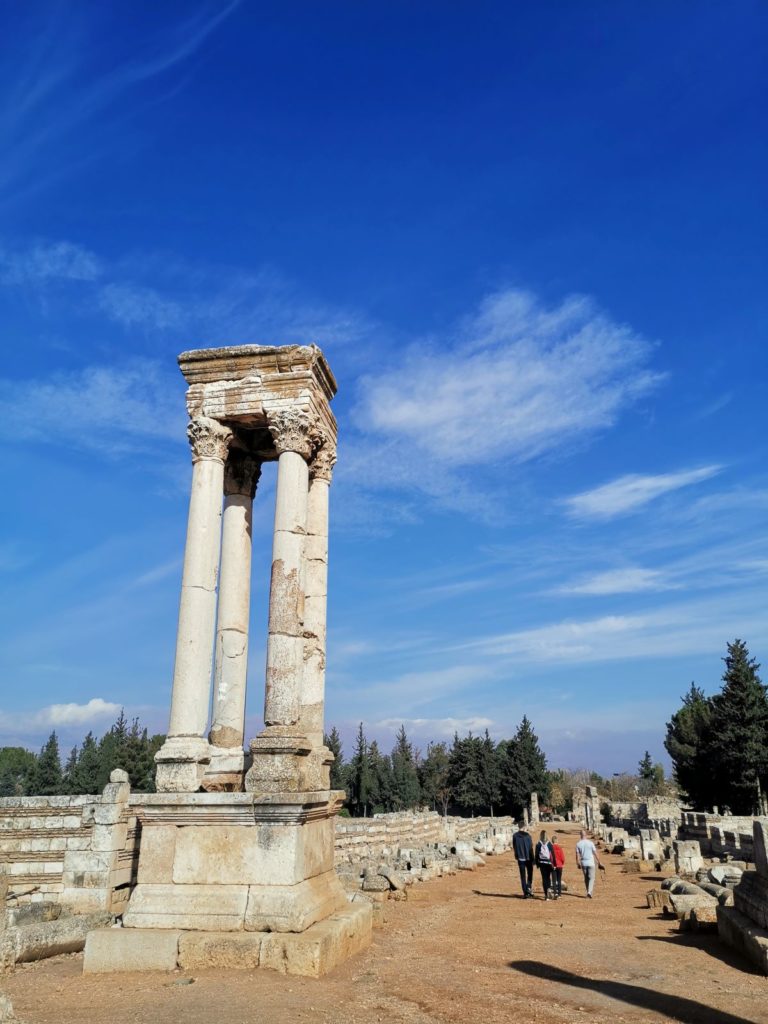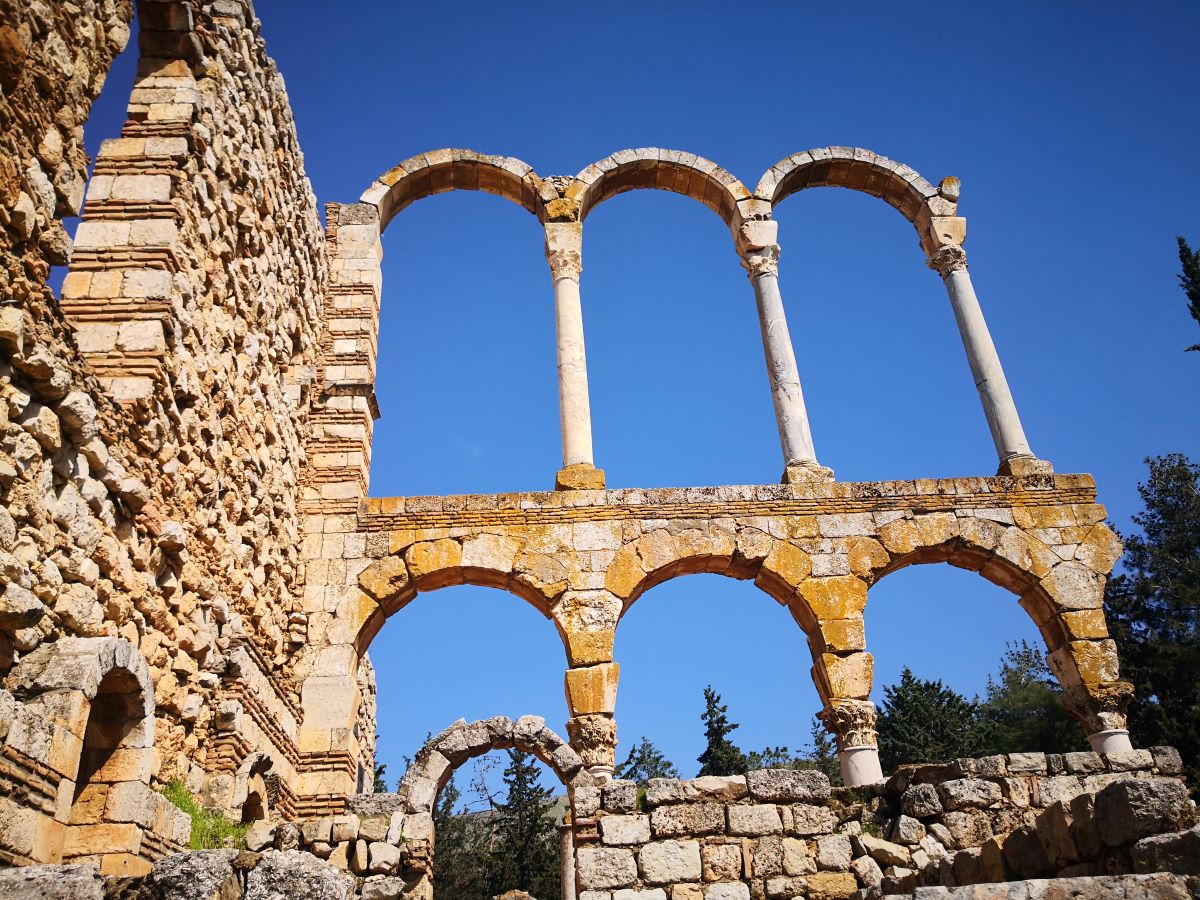Anjar town is located in the south-east Bekaa plain at the foot of the Lebanese-Syrian borders. It is known for its unique 8th Century AD Omayyad complex.
Etymology
En-Na-Ga-Ra – The earliest mention of the toponym ain al-jarr, name of modern Anjar, dates back to the 12th century BC. The scholar W.F. Albright believes to have found this toponym in Egyptian transcription “En-Na-Ga-Ra” on the list of Ramses III at the great temple of Medinet Habu, in Egypt.
Gerrha – The name Gerrha is mentioned by the Greek historian Polybius in the context of the wars which opposed Antiochos III and Ptolemy IV around 219 BCE. The toponym Gerrha is identified with Anjar since the names Gerhaa and Ain al-jarr are similar.
Ain Jara – Ain Jara was the name given to the city location around the 8th century AD under the Omayyads. “Ain” meaning water source and “Jara” meaning the foot, bottom, base or lowest part of a mountain, thus the location of the complex at the foot of the Anti-Lebanon mountain chain, surrounded by an abundance of water sources.
Location
Anjar’s location was chosen at the foot of the anti-Lebanon mountain chain for the fertile lands and year-round flowing rivers surrounding the site, and since it is located at only 60km from the Omayyad capital – Damascus. It is also positioned at the center of strategic trade routes that links several cities together, such as Baalbek to the North, Beirut to the West, Damascus to the East, and Palestine to the South.
Complex
The enclosure – Rectangular in shape, the enclosure of the Anjar site measures 370 meters and covers an area of 114,700 m2. Housing 40 defensive towers, the enclosure is oriented according to the 4 cardinal points and is pierced with a door in the middle of each side, the latter flanked by 2 towers.
The roads – There are 2 main roads in Anjar site. They intersect at right angles in the middle of the site under a tetrapylon, delimiting 4 quadrants of equal dimensions. These tracks connect the north and south, east and west gates together.
The porticoes – the main roads are lined with porticoes made up of columns and pillars.The columns, basements and capitals of the porticoes are considerably different in shape and size. The capitals have the particularity of carrying a transom, on which the voussoir rest. The same process is used at the Umayyad mosque in Damascus.
The structures – Anjar site houses multiple structures such as a main Palace, a smaller one and the remnants of 2 others, a mosque, small shops and a bath. The site has also an underground sewage system.
The ornaments – The porticoes, the gates and the palaces are rich with ornaments found on the capitals, friezes and niches. These ornaments are of different shapes and sizes, with a clear blend of western and eastern effects. According to different historical records, studies and inscriptions, some scholars suggest that the builders of the site were Greeks taken prisoners by Prince Al-Abbas during his war on Isaurie, Anatolia in 709 AD, Nestorians from Mesopotamia, Coptes from Egypt and finally Syrians. Consequently, we can understand and notice the different decoration effects found on the main structures of the site. There’s even some Iranian influence in some sections of the site.
Timeline
According to the several etymologies mentioned above, the site was mentioned several times before the Islamic era, although nothing has been confirmed by scholars.
Greco-Roman era – Excavations in the 50’s led some archaeologists to consider the foundations of the city to be of Roman origins. This theory remains debatable.
Byzantine era – Excavations revealed 2 granite columns, one on which was engraved a Latin inscription along with a Byzantine cross. Scholars believe that these columns do not come from Anjar, but most probably from a nearby locality. This theory remains debatable.
Islamic era – The history of Anjar has an obscure history and full of speculations, but it was promoted during the early years of the 8th Century AD when the Omayyad Caliph Al-Walid I founded the city in 714 AD. Some scholars believe that it is the son of the Caliph – Al-Abbas who was actually responsible for the construction of the site.
The construction of the city was never completed since the Omayyad dynasty fell in 750 AD.
Crusader era – The city of Anjar was mentioned once again during the crusader era which saw several battles between the crusaders and the Arabs in the Bekaa plain. The city of Anjar was, for a short period of time, a military gathering point and did not play any offensive nor defensive role.
The site fell in despair afterwards and was buried underground for centuries to come, with its fortification barely visible on the surface.
Karim Sokhn
Tour Operator & Tour Guide




